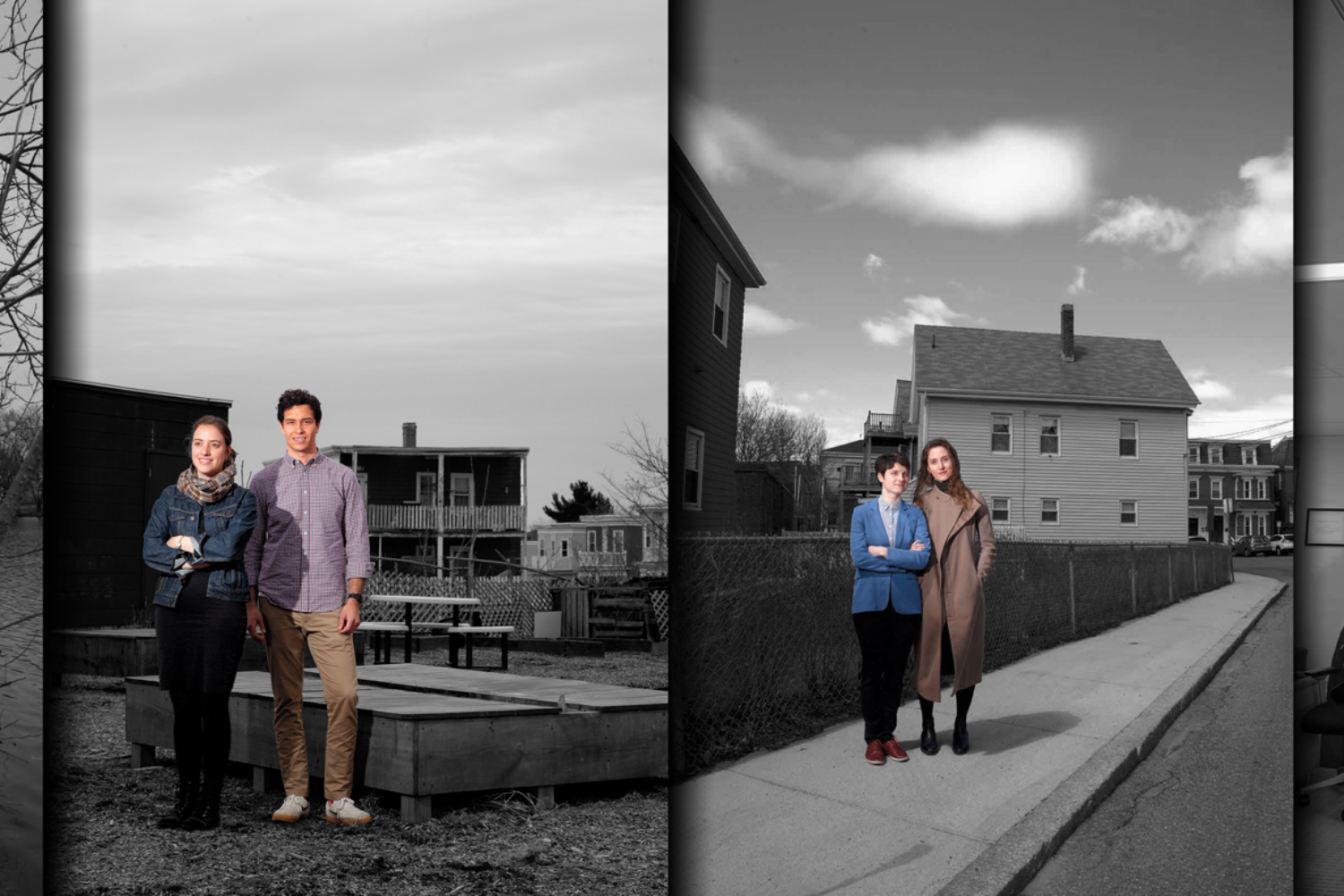Nearly 40 years ago, Harvard Law School pioneers in clinical education Gary Bellow ’60 and Jeanne Charn ’70 launched the school’s Legal Services Center in a house in Boston’s Jamaica Plain neighborhood. In its earliest incarnation, 24 students were enrolled.
Bellow passed away in 2000, but before that, he and Charn, now a senior lecturer on law at HLS, established the Legal Services Center in a commodious complex in Jamaica Plain. Today, more than 82 percent of the HLS Class of 2018 have participated in at least one clinic and 43 percent participated in two or more. The WilmerHale Legal Services Center, as it is now known, and the clinical wing of the newer WCC building on campus buzz with the creativity and commitment of students, faculty, and clients.
With 29 clinics in a wide range of fields of law and policy, students develop skills in an experiential program that constantly adapts to their interests, as well as to new approaches and areas of the law. They may choose domestic or international projects and focus on direct services, policy, litigation, or transactional work. Opportunities range from representing military veterans in the Veterans Law and Disability Benefits Clinic, to examining the First Amendment implications of online communications in the Cyberlaw Clinic, to working with the Navajo Nation through the Food Law and Policy Clinic.
“Our clinics have a particular power because students aren’t mere interns or simply second-chairing cases—we are grooming them for leadership in the world,” says Clinical Professor Daniel Nagin, vice dean for experiential and clinical education and faculty director of the WilmerHale Legal Services Center. A significant number of alumni from the International Human Rights Clinic have gone on to become leaders in human rights organizations, for example, and other clinics demonstrate similar influence.
“Students learn to work alongside and collaboratively with community people.”
“Students learn to work alongside and collaboratively with community people.”
Over 1,000 students enrolled in clinics this past year, either at one of 18 in-house clinics supervised by clinical faculty or through 11 externship clinics, including one that is focused on the role of state attorneys general, which, in an era rife with debate over states’ rights, is in huge demand. Some 700 students engaged in pro bono work through one of the 11 in-house Student Practice Organizations, which assist clients from Cambridge to the Mississippi Delta.
The HLS clinical program is one of the largest providers of free legal services in New England. In Boston and Cambridge alone, 3,556 clients were served in 2016, and hundreds more were represented in other parts of the state and country, and internationally.
While J.D. students are required to work 50 pro bono hours before graduation, the Class of 2018 put in 376,532 pro bono hours, an average of 637 hours per student. Since 2005, HLS students have provided 4.475 million hours of pro bono legal services to people in need.
“The level of expertise of the faculty and staff, the incredible students, and the phenomenal resources of the law school allow us to be a nimble program that can respond to the needs of clients and, more broadly, to the rule of law in the world,” says Lisa Dealy, assistant dean for Clinical and Pro Bono Programs.
For a glimpse of the clinics today, here are accounts of four projects connected to pressing legal and social issues: environmental protection, gentrification of low-income neighborhoods, immigrants’ rights, and prisoners’ rights in an age of mass incarceration.
Supporting Citizen Scientists Around the Country
 Is the air in your neighborhood safe? What about the water in the creek behind your home? Since governmental bodies don’t have enough resources to gather data on the countless environmental issues in our world, average people—“citizen scientists”—are increasingly collecting and analyzing data to help solve serious environmental problems.
Is the air in your neighborhood safe? What about the water in the creek behind your home? Since governmental bodies don’t have enough resources to gather data on the countless environmental issues in our world, average people—“citizen scientists”—are increasingly collecting and analyzing data to help solve serious environmental problems.
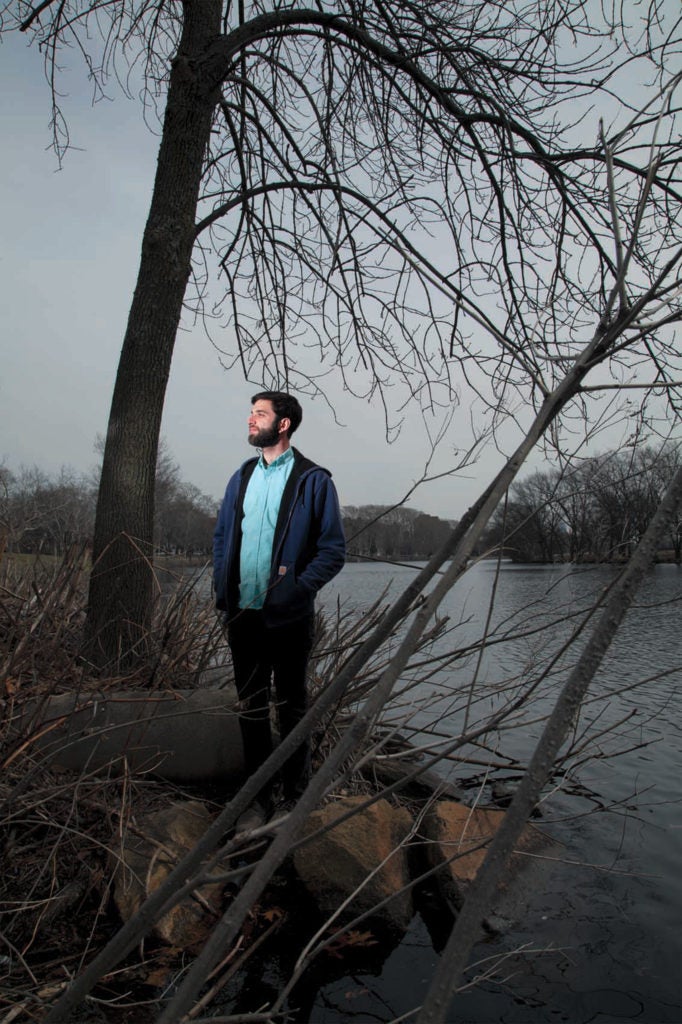
However, some state laws hinder or even prevent the public from engaging in these efforts. For example, a couple of years ago a law was passed in Wyoming to criminally prosecute people for inadvertently trespassing on private land in order to collect environmental data, and the government is not allowed to accept or use such data. Two summers ago, when a scientist reached out for help to Professor Wendy B. Jacobs ’81, director of HLS’s Emmett Environmental Law and Policy Clinic, Jacobs saw the opportunity for a student project.
Erik Federman ’18 was a member of the first three-student group to take this on. His team conducted an analysis of the laws in all 50 states to identify legal obstacles to citizen science, including trespass, public nuisance, “ag-gag” (related to animals), and even drone laws, since using drones is an inexpensive way to gather scientific data. Another three-student team continued the project, and together their work resulted in the “Manual for Citizen Scientists Starting or Participating in Data Collection and Environmental Monitoring Projects,” an electronic guide that’s a central repository for laws governing citizen science and tools for engaging in it.
Jacobs shared the guide with legal aid clinics, law school clinics, grass-roots organizations, scientists and others around the country. Given the Trump administration’s willingness to “ignore, demean, and distort science,” she says, including defunding enforcement of environmental laws and removing information from governmental websites (the clinic is also developing tools to help scientists and others fight back against attacks on science), “ordinary people need to be empowered to step into the breach.”
“The goal is to encourage more of this activity,” says Federman, who plans on a career in environmental law. “There’s a lot of excitement around citizen science in the environmental justice context, as it can be an effective way to arm communities that bear a lot of the brunt of pollution but don’t necessarily get support they need to deal with it.”
The guide is not only interactive—people can upload comments about their own citizen science work—but also flexible. When Hurricane Harvey hit the Gulf Coast last August, the clinic quickly assembled a team of students to work on expanding the manual with a Harvey-specific appendix that helped the public develop strategies for getting critical information they needed about the safety of their local environments, including through Freedom of Information Act requests. Other students are now expanding the guide to help the public prepare for disasters, both natural and man-made.
Federman says Jacobs gave his student team “a lot of leeway in designing the guide, which was really valuable to me in learning to think strategically.” While he enjoyed and appreciated his traditional law school courses, Federman—who did a second semester in Jacobs’ clinic as well as two semesters in the Food Law and Policy Clinic—adds: “At the end of the day, I’m here because it’s a professional school and I want to get professional skills. My clinical experiences have been really valuable in giving me on-the-job experience that will be directly applicable to the type of work I want to do when I leave law school.”
Empowering Small Businesses to Stay in the Neighborhood
 As Boston real estate prices soar and gentrification in lower-income places like Dorchester and Jamaica Plain continues apace, residential tenants aren’t the only ones losing their homes. Small businesses that serve neighborhoods and give them their distinct character have far fewer legal protections and are being evicted or forced out by rising costs.
As Boston real estate prices soar and gentrification in lower-income places like Dorchester and Jamaica Plain continues apace, residential tenants aren’t the only ones losing their homes. Small businesses that serve neighborhoods and give them their distinct character have far fewer legal protections and are being evicted or forced out by rising costs.
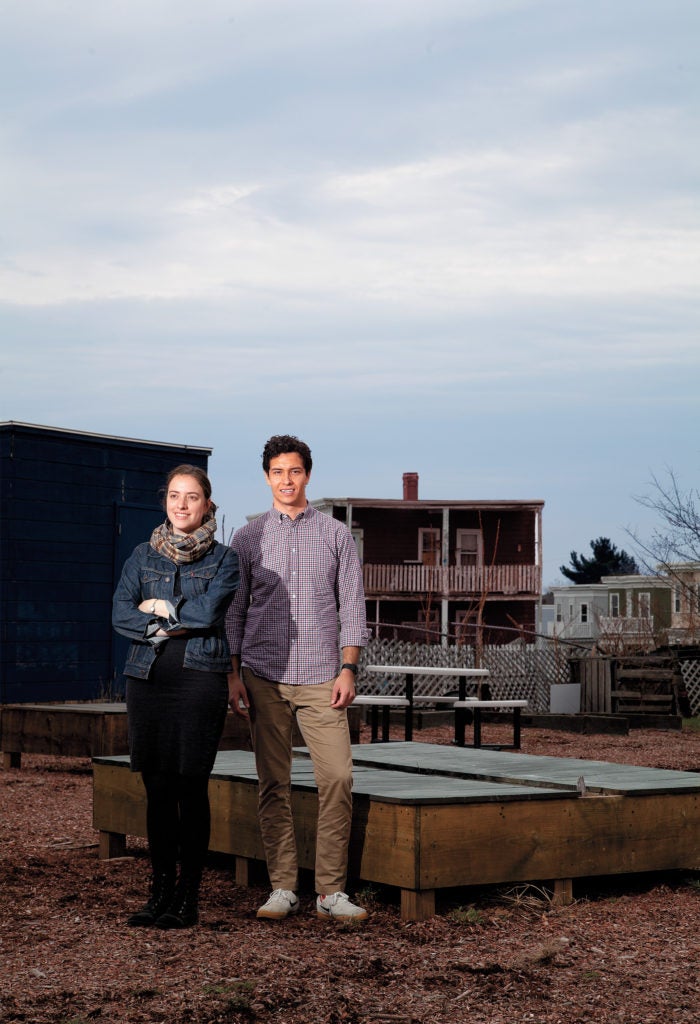
The Community Enterprise Project at HLS’s Transactional Law Clinics helps these communities fight back with a new “Commercial Leases 101” legal toolkit, created by two students to help business owners understand the importance of having a lease and how to negotiate better terms.
“I was able to get experience with movement lawyering and bigger-picture legal advocacy.”
Last fall, Michael Trujillo ’18 and Alexandra Glancy ’19, with the guidance of Clinical Instructor Carlos Teuscher, teamed up to assist small businesses facing gentrification. First, the duo reached out to neighborhood and community organizations that are fighting to preserve their communities, including Bowdoin Geneva Main Streets, Dorchester Bay Economic Development Corporation, and the Jamaica Plain Neighborhood Development Corporation. They canvassed small businesses to determine what would be most helpful before putting together the annotated toolkit, which offers a wealth of resources for better legal protections. Trujillo, who plans a career in social movement lawyering, says, “We are hoping this toolkit empowers small-business owners to have the legal knowledge to understand what a good lease looks like and ask for better arrangements with their landlords.” They presented the toolkit to local business and community groups and held office hours to help small-business owners negotiate more favorable leases.
CEP also shared the toolkit with the city of Boston, and Teuscher plans to have other clinical students continue to work with community partners to push for more statutory protections for commercial tenants. But the toolkit could have a greater reach than just Boston, he says. Toolkits produced in the past by CEP students have had a national impact, including an immigrant entrepreneur toolkit that clinics across the U.S. are using as a model. While landlord-tenant law is state-specific, Teuscher hopes the commercial lease toolkit’s widely applicable resources will allow it to have a similar impact.
Meanwhile, the educational experience for students is exceptional, Trujillo and Glancy say. “I learned so much, from interacting with and interviewing clients to thinking about innovative ways to use legal tools—for example, things you can put in a lease that aren’t in typical leases but can increase the tenant’s power,” says Glancy, who knew about TLC before coming to HLS and was drawn to the school in part because of it.
Clinical Professor Brian Price is director of the Transactional Law Clinics, which offer students work in a wide range of areas from business formation to taxation, real estate and employment matters. “Our approach from day one is that students will be taking ownership of the cases, and that they not see themselves as assisting their supervising attorney but rather as the person who is leading the case with the guidance of the supervising attorney,” Price says.
With CEP projects like the toolkit, he adds, there are leadership lessons. “Students learn to work in a team … and they see how lawyers—particularly transactional lawyers—can help lead not by dominating an issue but working alongside and collaboratively with community people.”
Helping Immigrants in Times of Acute Need
 In March, a Bhutanese man living in Minnesota as a lawful permanent resident but facing deportation from the U.S. for a minor crime got welcome news: After eight months in jail, the Board of Immigration Appeals ordered him to be released and returned to his family.
In March, a Bhutanese man living in Minnesota as a lawful permanent resident but facing deportation from the U.S. for a minor crime got welcome news: After eight months in jail, the Board of Immigration Appeals ordered him to be released and returned to his family.
Immigration and Customs Enforcement officials claimed that the man’s conviction under a Minnesota statute for making threats was a “crime involving moral turpitude” under federal immigration law, mandating his deportation. Increasingly, ICE has been making this same claim against immigrants with minor criminal convictions. Students in the HLS Crimmigration Clinic—working on issues at the intersection of criminal law and immigration law—wrote a lengthy brief arguing that the conduct covered by the state statute was so broad and nebulous that it could not be considered a crime of moral turpitude under the federal law. The immigration board agreed.
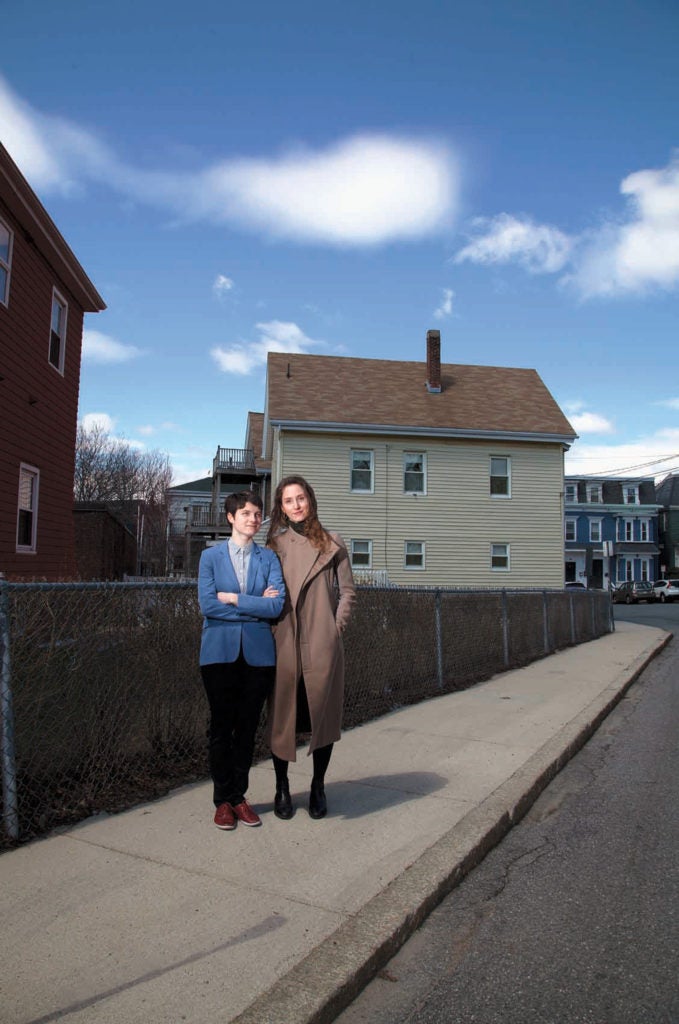
The victory has important implications for other immigrants, says Clarissa Lehne ’18, who helped write the brief. It’s also been an important part of her legal education. “We rarely get to apply what we learn in the classroom at law school to practical work,” she says. “To be able to do that and do it successfully was not only enormously gratifying, but an indelible learning experience.”
At the same time, Lehne has become painfully aware that “our client is one of a vanishingly small minority who have legal representation during their immigration proceedings,” she adds. “It is humbling to think about how many noncitizens caught up in the U.S. immigration system might have similarly strong arguments in their favor but no access to the resources they need to make them.”
As deportation efforts have ramped up, the clinic is swamped with requests for help from immigrant rights groups around the country. Phil Torrey, who is managing attorney of the Harvard Immigration and Refugee Clinical Program and supervises the Crimmigration Clinic, says he selects the most critical cases and then works with students to determine how many the clinic can handle. He says a lot of his students will be running immigration law organizations one day, so they have to learn how to select the most impactful projects, “because you can’t do it all.”
Paulina Arnold ’18, who worked on the Minnesota case and a similar case before the U.S. Court of Appeals for the 9th Circuit, chose HLS specifically because of HIRC. “Rather than just learning how to talk to clients and represent their interests, I’ve gotten a much broader range of skills,” says Arnold, who plans a career in detention work. “I was able to get experience with movement lawyering and bigger-picture legal advocacy on behalf of community groups.”
Since its launch five years ago, the Crimmigration Clinic has evolved from providing legal advice to detainees to doing significant litigation and policy work. When the U.S. Supreme Court issued the landmark Padilla v. Kentucky decision in 2010, requiring criminal defense attorneys to understand the immigration consequences of their clients’ criminal charges, the clinic began doing Padilla advisements—researching those consequences for particular defendants, including clients represented by the Criminal Justice Institute at HLS.
Torrey’s classroom course on crimmigration, which enrolls approximately 22 students and has a waitlist of over 100, is a prerequisite for the clinic, which now has room for four students. But he plans to bump up enrollment in both. “Post-November 2016, there’s been an exponential explosion” in demand for the course and clinic, he says, as well as a growing need from immigrant communities and supporters. In addition to giving students litigation skills, the Crimmigration Clinic is unique because it’s at the intersection of two very different fields of law that have distinct processes and constitutional protections, he notes.
Students are assisting municipalities that want to designate themselves as sanctuary cities for immigrants, as well as brainstorming strategies for preventing ICE from leveraging “unfounded gang allegations,” as Torrey calls them, against people it wants to deport. “Once you’re labeled that way, it’s really difficult” to escape the serious implications, he says. Torrey represented a man who ICE claimed was a gang member because of what they said was a teardrop tattoo under his eye. “I brought him to court,” he says, “and showed the judge it was actually a birthmark.”
With National Focus on Mass Incarceration, Interest in Helping Prisoners Surges
 There are approximately 9,000 inmates in Massachusetts prisons, and very few people know or care whether some of them languish in solitary confinement for a disciplinary infraction they didn’t commit. The 250 students in the Harvard Prison Legal Assistance Project are exceptions.
There are approximately 9,000 inmates in Massachusetts prisons, and very few people know or care whether some of them languish in solitary confinement for a disciplinary infraction they didn’t commit. The 250 students in the Harvard Prison Legal Assistance Project are exceptions.
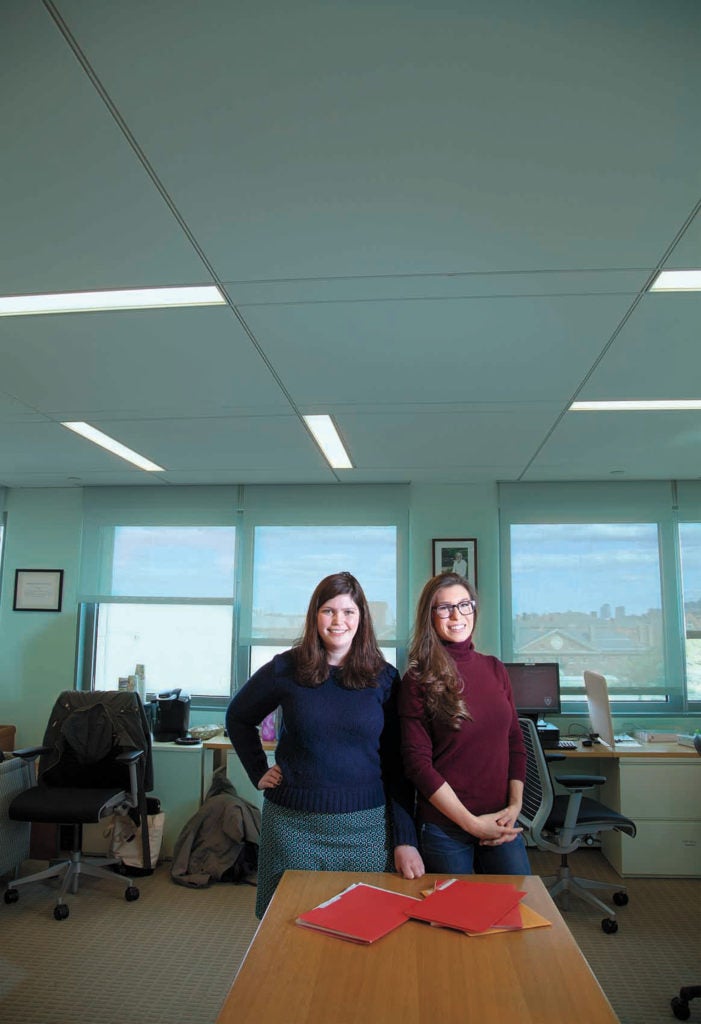
“Representing the underdog can only make your backbone that much stiffer. “
In 1970, PLAP was founded by “a half dozen scruffy law students [who] were drawn to advocating for other outcasts,” says John Fitzpatrick ’87, a PLAP alumnus and senior clinical instructor. As the law school’s feisty outsiders, “PLAPpers” proudly face off against the Department of Correction and the state parole board.
“We don’t win a lot of our cases,” says Tabitha Cohen ’18, PLAP’s 2017-2018 co-executive director along with Annie Manhardt ’18. “The cards are very much stacked against our clients. The hearing officers are DOC employees or former corrections officers—I wouldn’t say they’re impartial arbiters—and on top of that, we try to take on the more difficult cases.”
But last year, PLAP landed a huge victory when the Massachusetts Supreme Judicial Court agreed to extend the Americans with Disabilities Act to disabled prisoners seeking parole, in Crowell v. Massachusetts Parole Board, a case that Cohen argued before the high court.
“What makes us unique is that there is no other legal clinic for prisoners in the country—and maybe not in the world—that presents this wide an array of direct representation to prisoners and operates year-round,” says Fitzpatrick. “Representing the underdog can only make your backbone that much stiffer, your resolve that much more focused and informed, and can also educate you in a way you would not otherwise get in law school about what the highest principles of our rule of law are about: that everyone should be treated equally under the law.”
One of 11 student-run Student Practice Organizations at HLS, PLAP operates as a prison legal services clinic, with students representing inmates in disciplinary hearings, parole hearings and revocations, and more. Spurred by national focus on the ills of mass incarceration, its numbers are soaring, says Fitzpatrick, one of three part-time supervising attorneys. It’s also popular because any HLS student is eligible and can commit to as little as one hour of work a week, adds Manhardt.
Within weeks of beginning at Harvard Law School, Cohen was learning and applying practical lawyering skills, representing an inmate charged with attempting to smuggle drugs into prison. She learned how to interview a client, draft discovery motions, cross-examine corrections officers, and give an opening statement and a closing argument, and in the end she got 11 of 12 charges dismissed, with the sentence on the final charge reduced on appeal. “Even if you don’t get the result you wanted, most of our job is to let them know someone is on their side, and to hear their story and fight for them,” says Cohen.
“Most of our job is to let them know someone is on their side, to hear their story and fight for them.”
PLAP students assist thousands of prisoners and handle 50 to 80 formal legal proceedings annually, although Fitzpatrick expects that number to hit 100 soon. Although students do not receive academic credit, their work can count toward the 50 hours of pro bono work required of HLS students. Famous PLAP alumni include Tim Kaine ’83, former governor of Virginia and the 2016 Democratic vice presidential candidate; Kaine’s wife, Anne Holton ’83, Virginia’s former education secretary; national security analyst Juliette Kayyem ’95; Bryan Stevenson ’85, founder and director of the Equal Justice Initiative; Charles Ogletree Jr. ’78, HLS professor and founder of the Charles Hamilton Houston Institute for Race and Justice.
With so much student interest and prisoner need, PLAP is “overwhelmed,” says Fitzpatrick. “But being the underdog representing the underdog, that’s a position we are comfortable with and accustomed to.”
